Concrete once considered the Cinderella of flooring materials has come a long way. Long relegated to life as a subfloor – and covered up by a host of materials such as wood, tiles, and carpeting – it’s currently having its day in the sun.
Hardworking, low maintenance, versatile, affordable, and in it for the long term, polished concrete is an undeniably appealing floor choice. Consistently now popular with architects as a floor finish for its raw, urban feel that’s a perfect backdrop everything. Versatility is a big part of concrete’s appeal, but, like most things, it’s not without its faults. Is it the one for you? Let us help you decide.
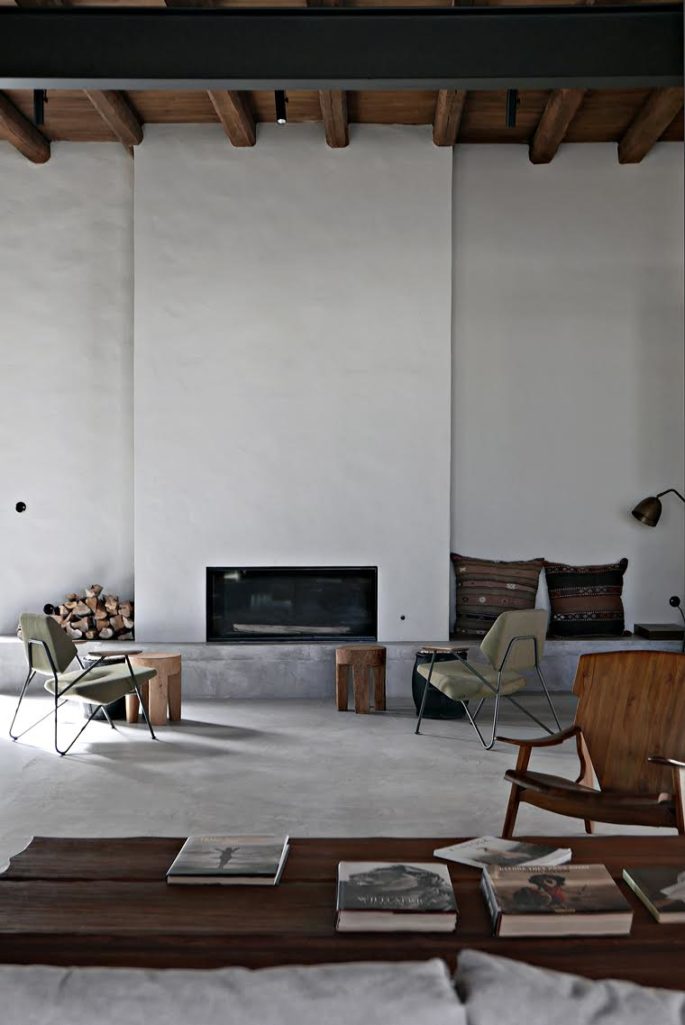
Popular with architects as a floor finish for its raw, honest feel that’s a perfect backdrop for modern living spaces. Image courtesy of UK Elle Decoration.
There are few limits to what you can do with concrete on the floor, but any large-scale area like the floor requires careful preparation. With this material there’s no space for errors. If you make a mistake you have to start again. Floor installations are time consuming and tricky – the sub-layer beneath the poured concrete must be absolutely level to avoid cracking, and you need to factor in things like the removal of any floorboards, structural reinforcements and time for the concrete to cure (usually a few days – sometimes, weeks). Benefits however are many: concrete floors are durable and heat-retaining.
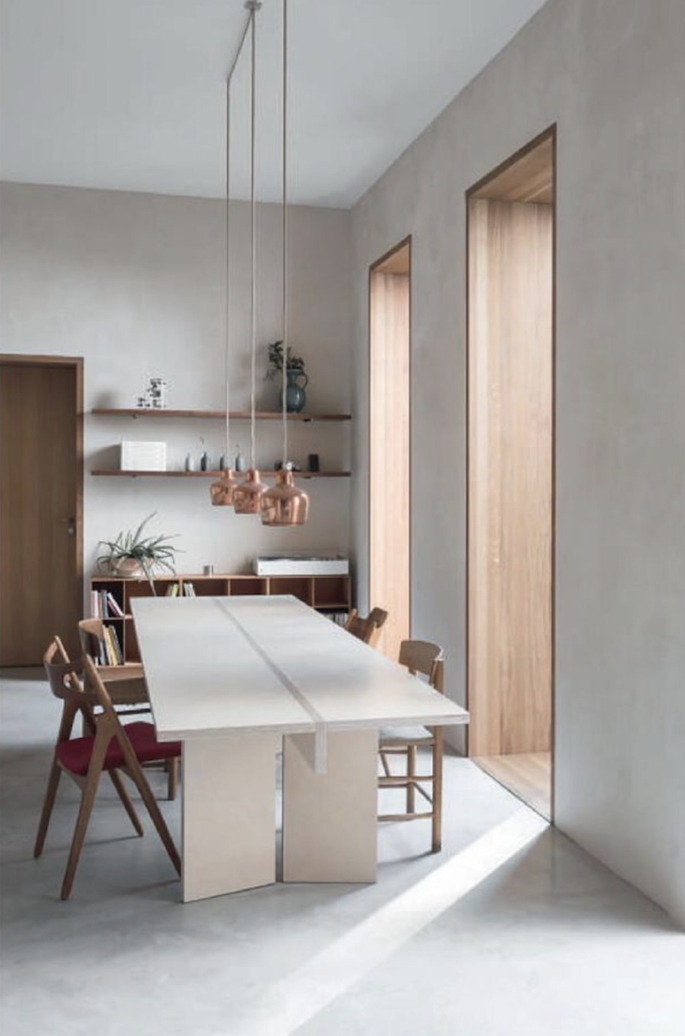
Benefits of concrete floors are many: they are durable, heat-retaining, affordable and in it for the long haul. Image via Elle Decoration
A sleek polished finish is practical and hard-wearing, while exposed aggregate styles with the grit in the concrete visible for added texture is a good option in less high traffic areas.
Concrete can be customized in various ways imprinting it with relief patterns, studding it with stones and glass or casting in in wood for an organic look. It doesn’t have to be grey either, mixing pigment with liquid concrete produces surprisingly intense colours.
If you’re concerned about the cost of concrete, look at the new MicroConcrete finish, which is laid thinly over tiles or wood and creates the same look at a fraction of the price. It’s also stain resistant, not always the case with conventional concrete which needs to be sealed to protect it in wet or high-use areas and like, marble is vulnerable to chips and damage from acids. Consult a specialist in your area.
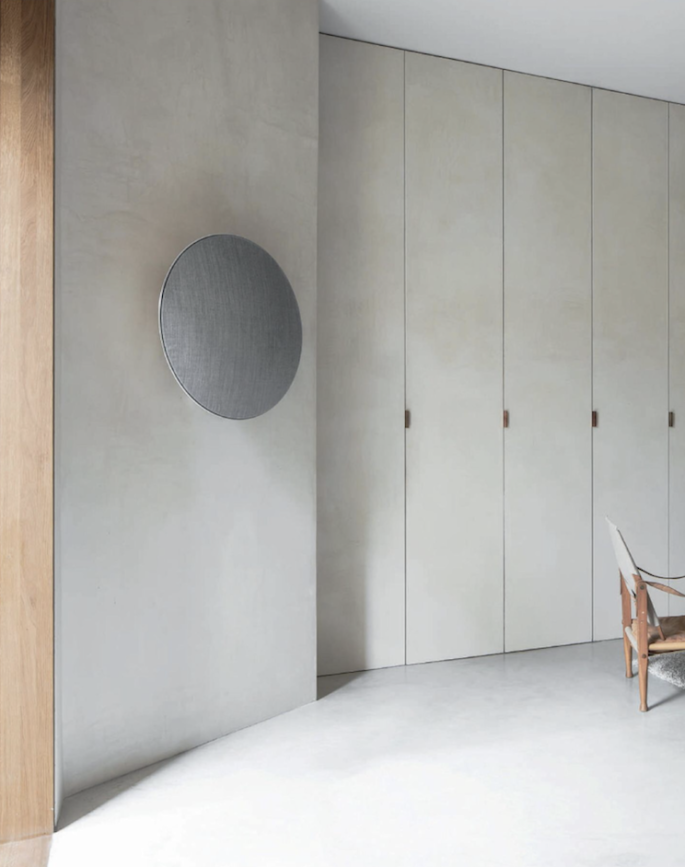
Image via Elle Decoration
What is polished concrete?
Concrete is a natural composite material made from an aggregate (typically rocks, river stones, and granite chips) combined with a cement binder (such as limestone and calcium sulphate) and water. For those wondering what the difference is between concrete and cement, the simple answer is that cement is a component of concrete: pavements are made of concrete, not cement.
Transforming concrete into a smooth and decorative surface for flooring requires treating it with a concrete densifier, a chemical that’s applied over the concrete surface to fill the pores. Once the surface is prepared and dried, it’s then ground with grinding tools that get progressively finer to achieve the desired finish. Polished concrete is measured in grades and finishes: the higher the grade, the larger the exposed aggregates; similarly, the higher the finish, the shinier the polish.
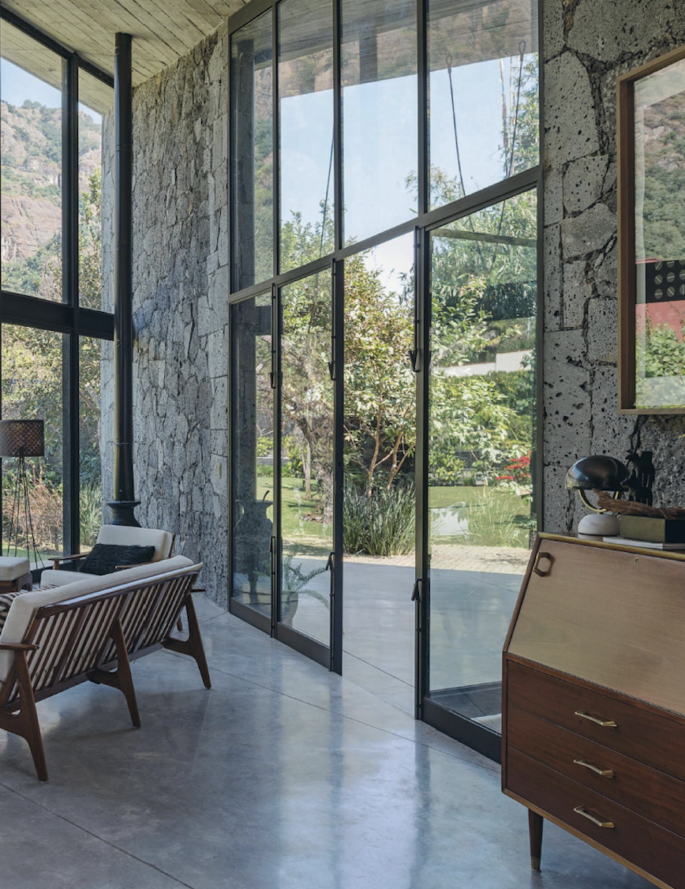
Concrete floors are an easy and cost-effective way to achieve a unifying aesthetic – one that offers a seamless transition from interior to exterior. Image via Elle Decoration
Why are concrete floors trending?
The material has become synonymous with honesty and integrity. When working with large open spaces, concrete floors are an easy and cost-effective way to achieve a unifying aesthetic – one that offers a seamless transition from interior to exterior. And with its thermal conducting properties, concrete works particularly well with radiant floor heating systems, warming up large swaths of floor space efficiently.
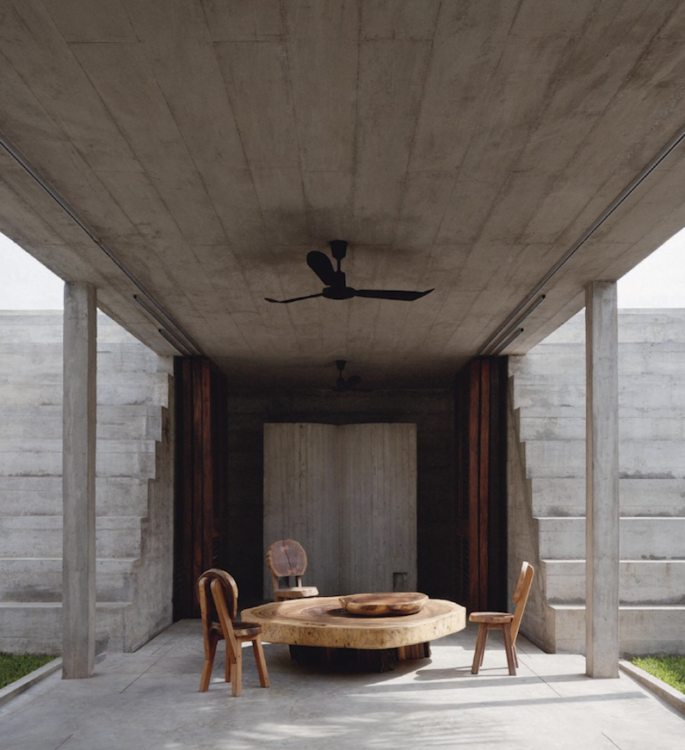
Concrete has become synonymous with honesty and integrity. Image via Elle Decoration
What are the challenges involved in installing a concrete floor?
Just because concrete implies utility doesn’t mean that working with it is simple. We love polished concrete for its visual appeal and its performance as a floor, but the process is not as simple as it sounds. Because the material is wet at first, the timing of all the steps is critical and must be carried out by a specialist. Before pouring, the concrete it has to be vibrated to remove air bubbles. During pouring, the concrete must be levelled perfectly and expansion joints must be incorporated to avoid cracking after it’s in use. To create a smooth surface, a trowel machine gets run over the concrete at exactly the right moment in the curing when it’s still quite wet. The entire process from start to finish occurs over a matter of days, and the surface must be protected against potential damage while it dries. The specialist contractor then returns to polish the floor, which is done mechanically with abrasive grit – usually with a diamond content. This is not a job for a DIYer – or even most ordinary builders.
If your concrete floors are stained, their colour is quite literally “set.” If you want to change it, expect to pay for it, or put in major elbow grease.
If you have the budget, hire skilled specialists. A stain or coating can last between 15 and 20 years with proper maintenance. If you don’t have the budget, and you’re going to DIY, do everything you can to follow best procedures from beginning to end.
Can I hire a pro to grind the floors and I’ll do the staining or coating myself?
The surface prep, including grinding, is the bulk of the cost with concrete refinishing.
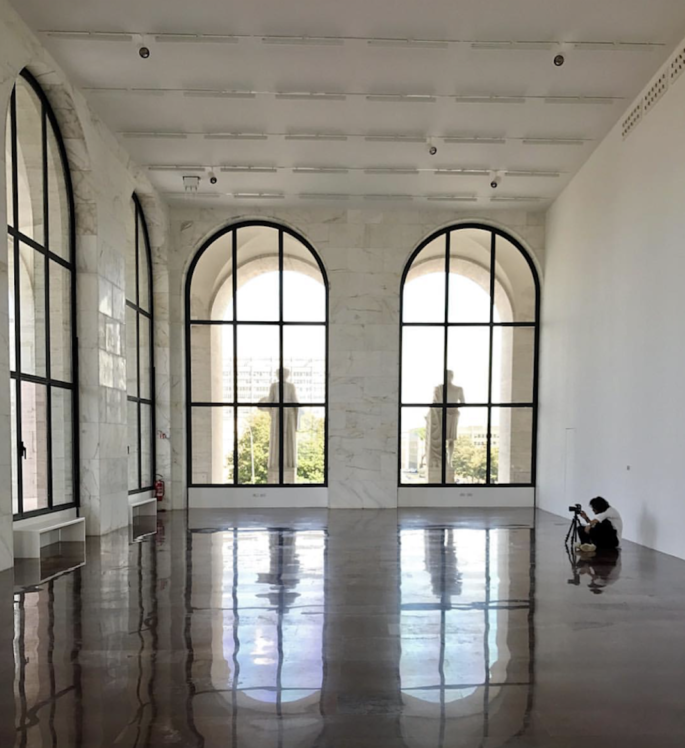
Image via Vogue Living.
How easy is it to change the colour of stained concrete floors?
Concrete soaks up everything and when floors are “stained,” or treated with a penetrating sealant, the colour gets absorbed. To change the colour, you can re-stain the floors (by applying a new penetrating sealant) or paint them (by applying an industrial coating). Other options include staining and then polishing your floors (which achieves a different effect than just re-staining) or covering them entirely with a new material, like a microtopping or concrete overlay.
You’ll need to get the existing surface mechanically ground down, to prime the concrete to accept a new stain and to remove as much of the offending colour as possible. You can’t control how much stain permeated the concrete in the original process. It can come off fairly quickly, or it could have permeated a few centimetres down. You’ll need to mechanically grind your floors to determine your next step. If you’re imagining going over your floor with an electric hand sander, don’t. It’s a messy process, and the dust is dangerous. If someone is going to do this themselves, they must do a ton of research first and follow safe practices to stay safe. To start, you’ll need to rent a mechanical grinder plus a large HEPA vacuum to filter the toxic particulates out of the air. You’ll also want to be sure the particulates stay away from anything you’ll be living with—so all belongings and furniture must be securely covered, or, ideally, removed before work begins. People and pets should stay away.
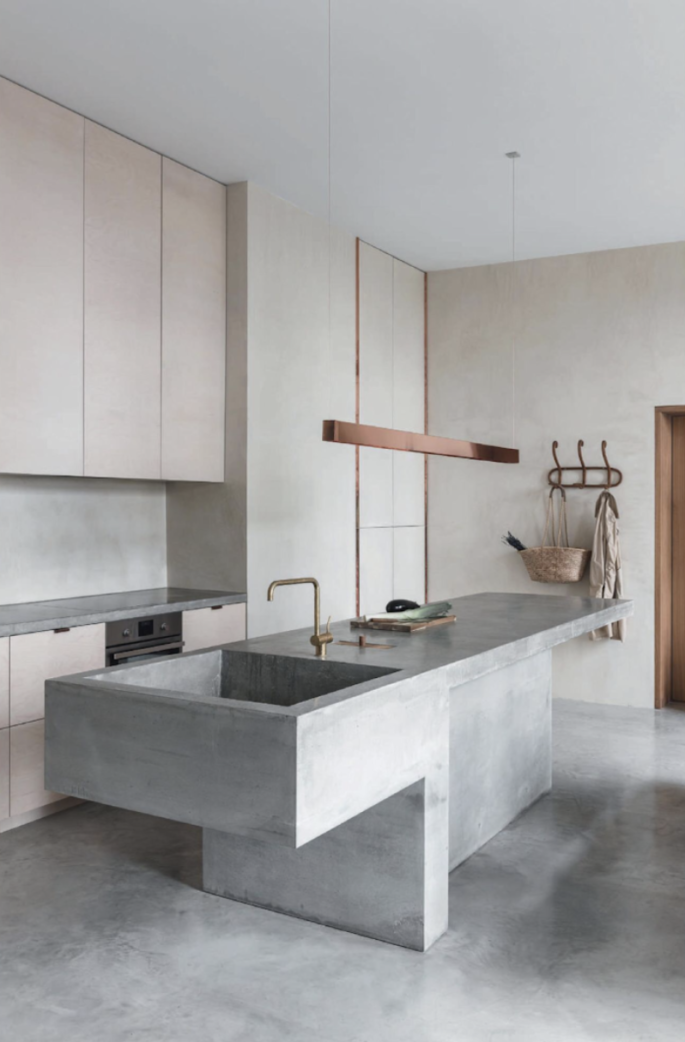
If you’re installing a new concrete floor, the texture and finish are determined by the grade of concrete used, how it’s poured, and the polishing process. Image via Elle Decoration
What kinds of textures, colours, and finishes are available for concrete floors?
If you’re installing a new concrete floor, the choices of textures, colours, and finishes are endless. Texture and finish are determined by the grade of concrete used, how it’s poured, and the polishing process. Colour can be introduced in several ways: Pigment can be mixed into wet concrete to achieve virtually any colour (coloured aggregates, too, such as stones, marbles, and pieces of glass, can be added), or an acid- or water-based stain can be used to colour.
Refinishing concrete to a perfect, polished showroom type of floor is time-consuming, but less expensive than epoxy and something that a DIY-er who has the time and energy can achieve if they really follow the right steps.


